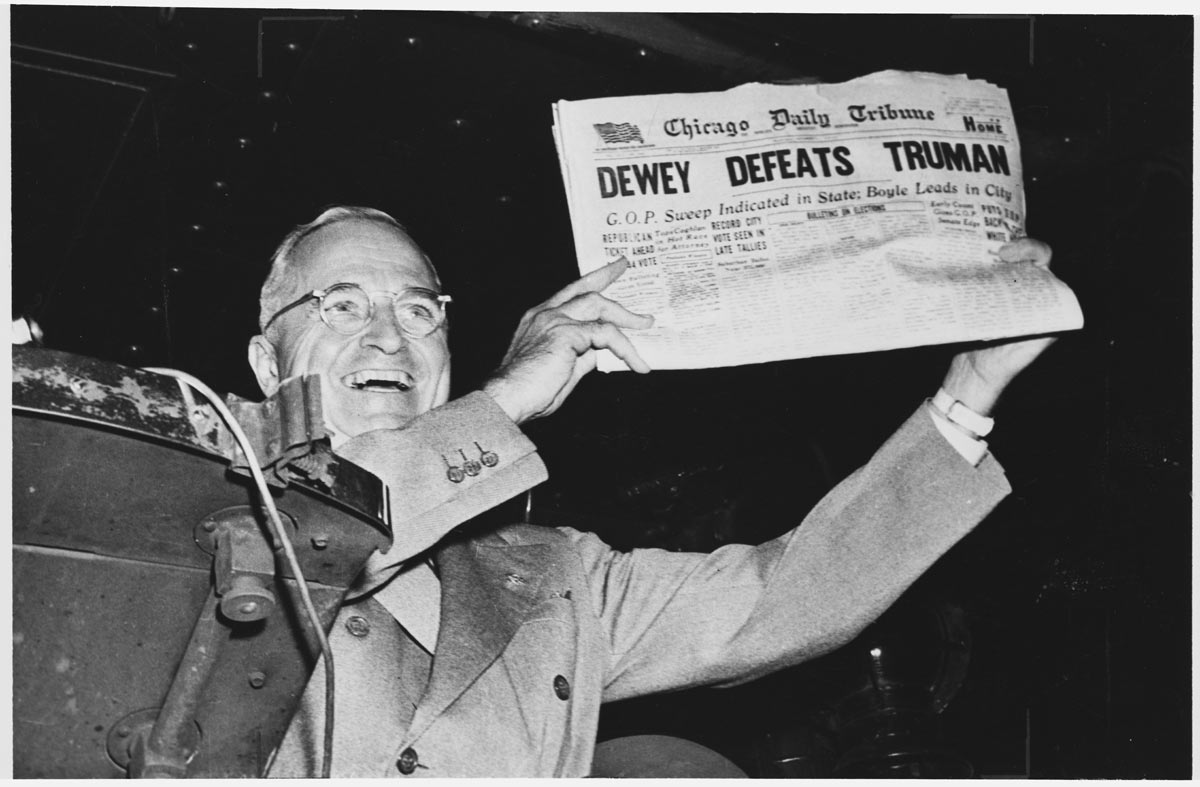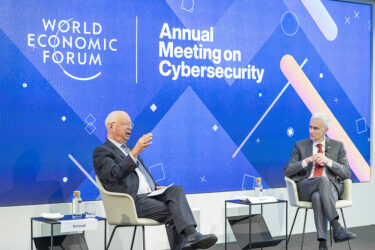Polls help the public to gauge election results, and it’s great to have that prediction. However, polls also play a larger role by actually influencing votes.
John Papadakis is CEO and Cofounder at Pollfish, a platform that delivers surveys online via mobile apps on a global scale.
The day after the 1948 U.S. presidential election, The Chicago Tribune declared the wrong man president. “Dewey Defeats Truman,” the headline read. Really, Harry Truman had won – he’d just been so behind in the polls, the newspaper didn’t think he stood a chance. And it prepared, then printed, the front page story totally wrong.
Our polling game has certainly improved since then. But still, election polls aren’t always accurate – an inevitable truth when surveying small samples of people. They fluctuate too, especially during party conventions, when voters are advised to not even take notice of polls until the conventions close. But although they can sometimes make varied predictions, polls do have a great impact on other areas of the election. Polls have the power to influence votes; even to change public policy.
Just how accurate are election polls?
It’s survey basics: if one properly selects a non-biased sample and uses the right survey method, the poll results will represent a larger population, projecting varied attitudes and opinions.
According to FiveThirtyEight’s Pollster Ratings, which analyze the historical accuracy of political polls, many pollsters call races correctly more than 90 percent of the time, like CNN for example. Others like CBS get it right 75 percent of the time. But there’s a handful on the list who call races correctly less than 70 percent of the time – and that’s not necessarily a great track record.
Other data from the National Council of Public Polls found election polls to be on average, actually quite accurate. Since 2002, the council has analyzed polls 20 days before presidential elections and found the average percentage-point difference between the two candidates was only off by 1.65 percent from what the polls had predicted.
That’s even as the response rate – the number of people who agree to a survey – has significantly dropped over the years. At Pew Research, the typical response rate for a telephone survey fell to 9 percent in the last 2012 presidential election, down from 36 percent in 1997.
However by using a mix of survey methods – such as in person, telephone, social media, email, mobile and in app – and the types of questions asked (see Pew Research’s 2012 election questions here), a researcher should in theory, be able to achieve an unbiased and accurate poll.
When polls control the vote
Polls help the public to gauge election results, and it’s great to have that prediction. However, polls also play a larger role by actually influencing votes.
Polls cause voters to follow the crowd. Voter behavior is affected by how they perceive the public will vote, especially when the media analyzes poll results. This happens by the means of the ‘Boomerang effect’ – where voters see a candidate is so far ahead in the polls, they feel their vote doesn’t matter and don’t vote at all – or the ‘Bandwagon effect’ – where essentially the opposite happens, and people want to vote with the crowds to support a candidate.
Some voters even switch sides to be on the ‘winning team’, according to a paper from Stanford’s Graduate School of Business and Microsoft Research. When the study’s subjects learnt an expert favored a different position, 11.3 percent of people changed their opinions – although only 6.2 percent of subjects did when they learnt a peer favored a different position.
The paper also found polls help people to seek out new information about a candidate or party. Voters then try to discover if they support this information or not based on ‘the wisdom of the crowds.’ For example, polls show 61 percent of Americans support a relaxed immigration plan. In this, a voter may see this policy as valuable and support it, too.
How polls influence political platforms
Polls also influence candidates, helping them design platforms and make important political decisions, such as choosing a running mate.
Donald Trump, for example, chose Mike Pence as his vice presidential pick. It might come as a surprise to read that he is a conservative who is strongly against banning Muslims from immigrating to the U.S., and who always endorses free trade. But it makes sense; as polls show nearly half of Republicans would prefer Trump wasn’t the candidate, Pence was chosen to appease the conservative GOP party, and help to (slightly) balance Trump out.
Additionally, polls influence politicians to adjust their stance on a subject, in order to garner more public support. Donald Trump has modified his stance on key issues – such as abortion and gun control – sometimes away from the traditional GOP stance and more in line with Republicans voters.
He believes abortion should be legal in cases of rape and incest, agreeing with 60 percent of Republican voters but disagreeing with the GOP. Rather, he stands with Republican voters and the GOP alike on gun control: about 35 percent strongly disagree on increased gun control. The numbers show he’s molded himself to represent his Republican voters.
Providing an opinion in a survey is a great responsibility. It’s up to the general public to provide opinions that express their true feelings, and equally, up to researchers to gain a real sense of what their samples are thinking and report back without bias, in order to produce an honest poll. Because public polls have great implications. They’re powerful enough to influence how the public votes, and further, how a candidate molds his or her political platform. All in all, public polls affect how an entire country is shaped.












